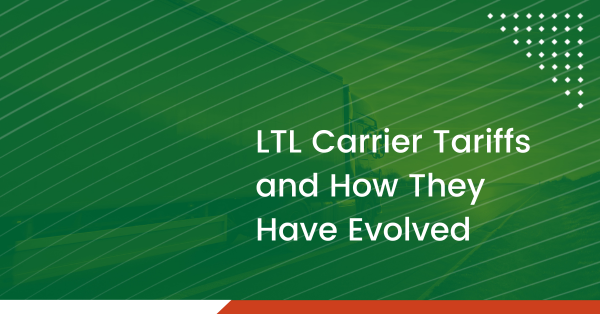As a shipper or a logistics manager, it’s crucial to understand how Less-than-Truckload (LTL) carrier tariffs work and how they are constantly evolving. In this blog post, we will discuss LTL carrier tariffs, how they are created, and how they have evolved over the years.
What are LTL Carrier Tariffs?
An LTL carrier tariff is a document that outlines the rates and charges for transporting LTL shipments. It’s a legal document that governs the relationship between the carrier and the shipper. The tariff includes various fees, such as the base rate, fuel surcharges, accessorial charges, and other fees associated with the shipment.
How are LTL Carrier Tariffs Created?
The carriers themselves create LTL carrier tariffs. The process usually involves analyzing the costs of transporting goods and determining a base rate that covers those costs. The carriers also consider market demand and competition when determining their rates.
Once the carriers have determined their rates, they must file their tariffs with the Surface Transportation Board (STB). The STB is a federal agency that oversees transportation regulations and ensures that tariffs are reasonable and non-discriminatory.
How have LTL Carrier Tariffs Evolved?
LTL carrier tariffs have evolved significantly over the years. In the past, carriers could charge whatever rates they deemed appropriate. This led to an environment where carriers could charge exorbitant rates without regulation.
In 1980, Congress passed the Motor Carrier Act, which deregulated the trucking industry and allowed more competition among carriers. This led to a decrease in rates and an increase in service quality.
Since then, LTL carrier tariffs have continued to evolve. The most significant change came in 1995 when the STB issued a rule that required carriers to publish their rates on their websites. This allowed shippers to easily compare rates among carriers and choose the best option for their needs.
Another significant change came in 2010 when the STB issued a rule that required carriers to disclose all accessorial charges on their bills of lading. Accessorial charges are fees carriers charge for additional services, such as inside delivery or liftgate services. Before this rule, carriers could surprise shippers with these fees after the shipment was delivered.
Today, LTL carrier tariffs continue to evolve. Carriers are now using technology to optimize their operations and reduce costs. This has led to new pricing models, such as dynamic pricing, which uses real-time data to adjust rates based on market demand.
How can PLS Logistics help
LTL carrier tariffs are a critical component of the shipping industry. They govern the relationship between carriers and shippers and ensure that rates are reasonable and non-discriminatory. Over the years, LTL carrier tariffs have evolved significantly from a system of unregulated rates to a system of competitive rates with increased transparency. As the industry continues to grow, shippers and logistics managers need to stay informed about the latest changes to LTL carrier tariffs.
As an industry-leading third-party logistics (3PL) company with over 30 years of experience, PLS Logistics Services is here to help you navigate LTL carrier tariffs.
For more information on shipping with PLS Logistics, including hazardous materials, heavy machinery, metal and mining, chemicals, and more, click here!


